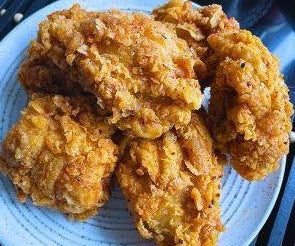Introduction: Breaking Down a Whole Salmon
Photo by Charlie Nordstrom
There is no food that lifts spirits, tickles the kundalini, hits the umami pleasure center, or exemplifies the perfection of the universe like wild Pacific salmon. Wild salmon also supports 137 other species from killer whales to osprey to seals to caddisflies, so they are critical connectors of ecosystems, from salt water, to rivers, and the land.
Salmon are born in freshwater, and after a year or so in the river, migrate downstream to salt water. King salmon is most common on the California Coast. They live 5-7 years in total, before migrating back to their streams where they spawn, die, and their decomposing bodies fertilize plankton to feed their offspring the next spring.
What salmon share with us through their deaths goes beyond feeding their own offspring. Salmon are an integral part of many food webs, as they are, along with steelhead trout, the only fish that bring nutrients from the sea to the land. Bear and eagles take these creatures from the water to the through forests. Gulls and crows scavenge the parts that the eagles and osprey don’t eat. And all the birds scatter the minerals and nutrients the salmon bring from the ocean to the land, helping to fertilize the surrounding trees and plants forests, which in turn help clean run-off to the rivers and provides shade for returning salmon.
These are amazing animals, and a really sustainable seafood choice. But to show them respect, and do ourselves a favor, it’s best to eat the whole fish-not just slice off a few prime fillets and waste the rest. By eating the whole fish, we come to know it intimately. You get more of the potent oils when you eat the eggs. If you treat the skin like fish bacon, you’ll soak up healthy fats stored in it. The head, normally thrown away will make a tasty soup that is literally brain food—it will make you smarter and help keep dementia at bay. The belly is prime fare; since it’s so fatty it’s a motherlode of Omega-3’s and the bones add calcium to your diet. And there are also the more abstract benefits by eating adventurously, as we cultivate our creativity, and taste the world around us in new, unexpected ways.
Step 1: Catch a Salmon or Choose a Fresh One
Photo by Charlie Nordstrom
Best case scenario is that you catch your own salmon. If you don't, then go to your local fish market. This one came from Martin Reed stopped by to help break it down.
Salmon sold whole tend to be about half the price of fillets or steaks. It is usually gutted, so unfortunately, they rarely have eggs. But try to get it with the head and tail still intact.
To check for freshness, look at the eye. It should be clear, not cloudy. Also, gently touch the flesh. It should spring back up. The gills may have been cut out to preserve freshness, but if not, look for red, not brown or browning gills.
Step 2: Fillet the Salmon
Photo by Charlie Nordstrom
You'll start making your first fillet by cutting down the center line on the back. Cut all the way down to the bone.
Step 3: Fillet Each Side
Photo by Charlie Nordstrom
In one continual motion, run your knife along the salmon bone, removing the flesh from the bone. If you slip, that's okay, just try to not "saw" the flesh, but make the slicing motion as smooth as possible. Then flip the fish over and fillet the other side. (The second side is always much more difficult for me. Just keep a firm grip and take your time.)
Step 4: Remove the Collar From the Head
Photo by Charlie Nordstrom
The collar of the salmon is a meaty, fatty, delicious ring between the body and the head. Slice just behind the gills to cut this off of the head.
Step 5: Remove the Belly Meat
Photo by Charlie Nordstrom
The belly meat will be the pale, thinner section of the fillets you sliced. Cut these off and set them aside. They are also really fatty and delicious. People often smoke them.
Step 6: Remove Skin (Optional)
Photo by Charlie Nordstrom
People often keep the skin on salmon for cooking, as it protects the fish from BBQ grill flames, and the fat content from the skin seeps back into the flesh while cooking. However, if you take the skin off, you are in for a treat. Slice it into strips, rub a little sesame oil onto it and bake until crispy. Here's a recipe for a rice bowl, bibimbop, using the salmon skin.
Step 7: Keep Your Collar, Belly, Bones & Tail
Here are Instructables on making a smoked salmon & corn chowder using bones and heads, another one on making salmon rillettes with the collar and belly, and finally a version of bibimbap using fish skins and eggs. You can also refer to Salmon SPAM Masubi Instructable on using the trimmings. One fillet is becoming gravlax and the rest of the the lovely flesh I vacuum packed and froze to use later for sushi. So stay tuned.











